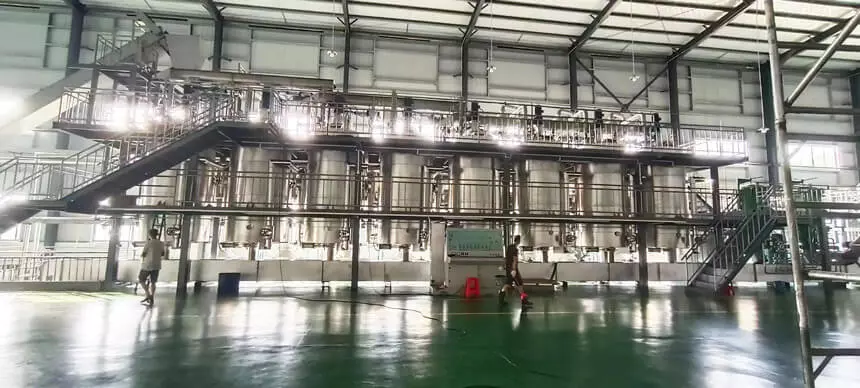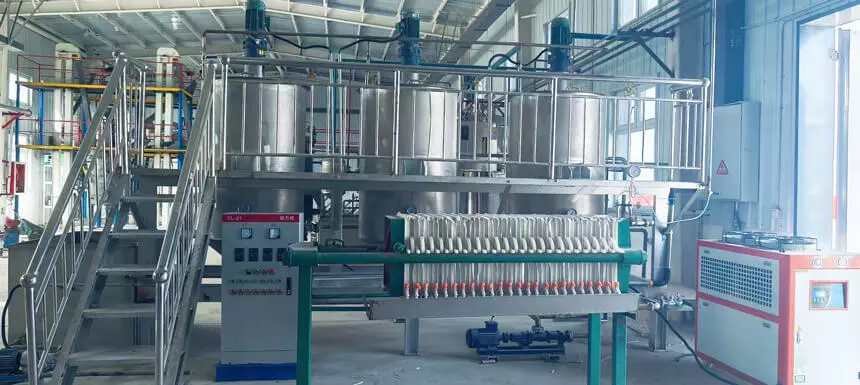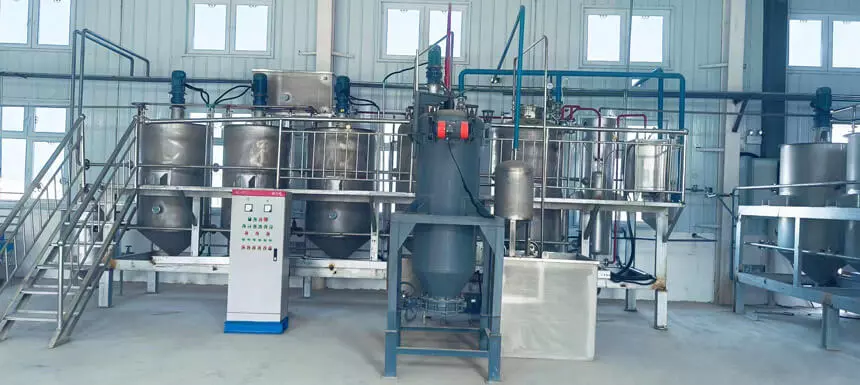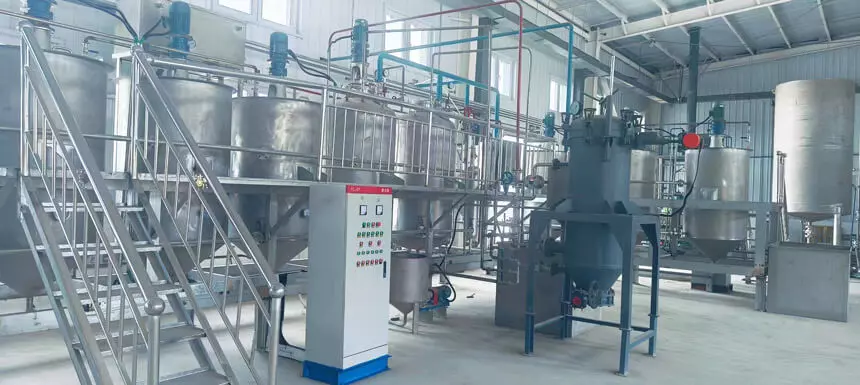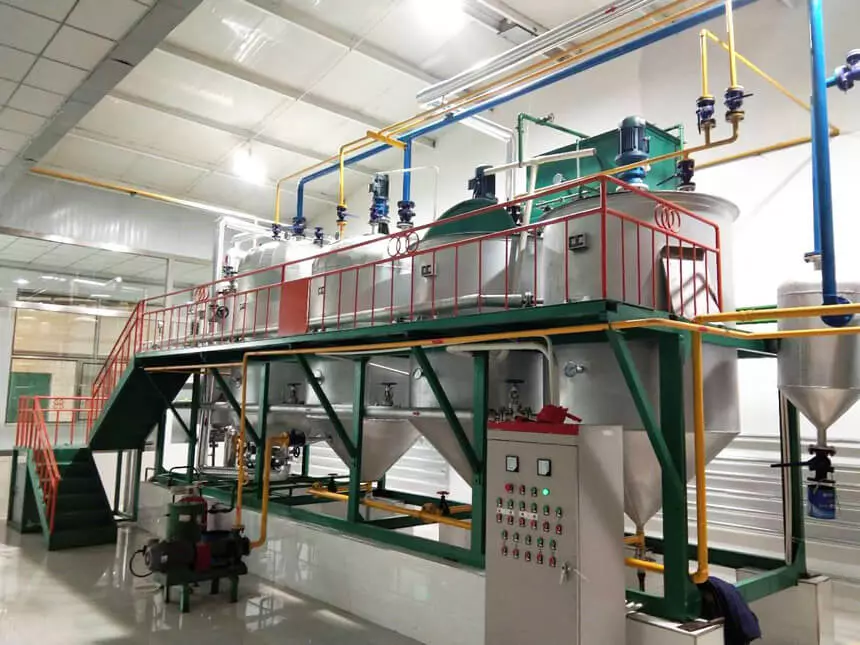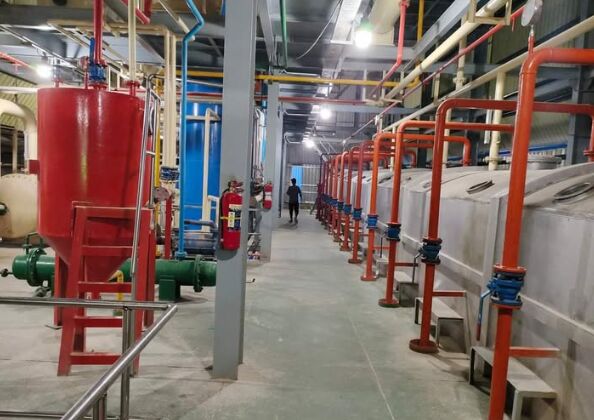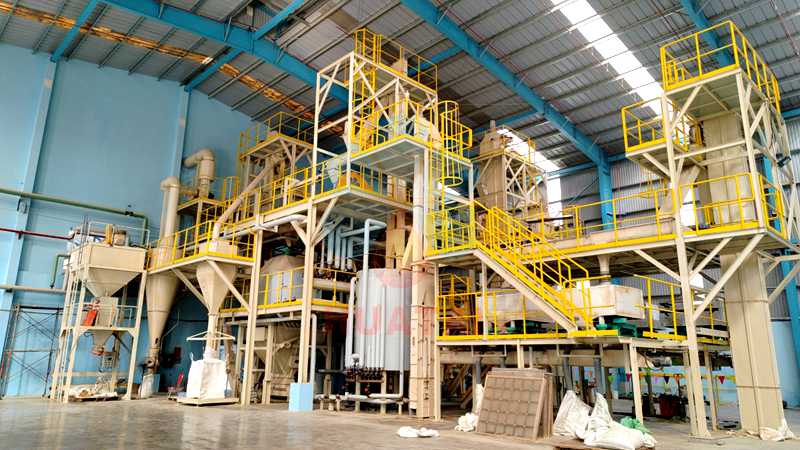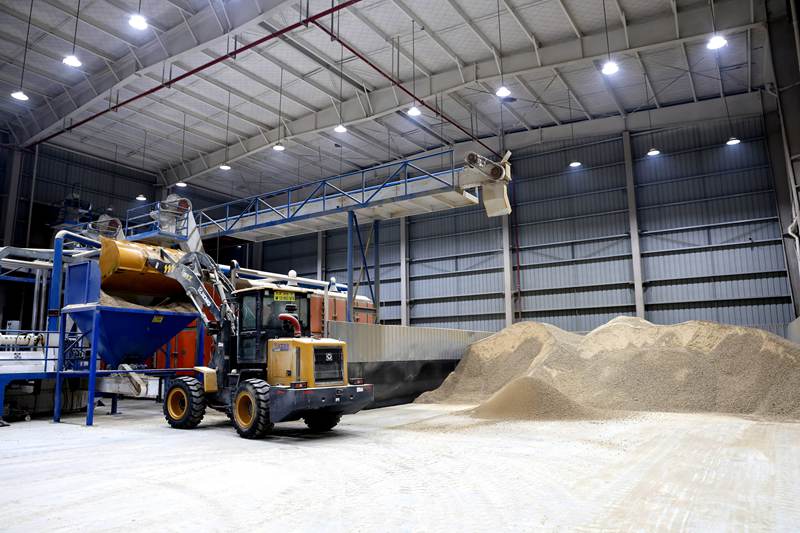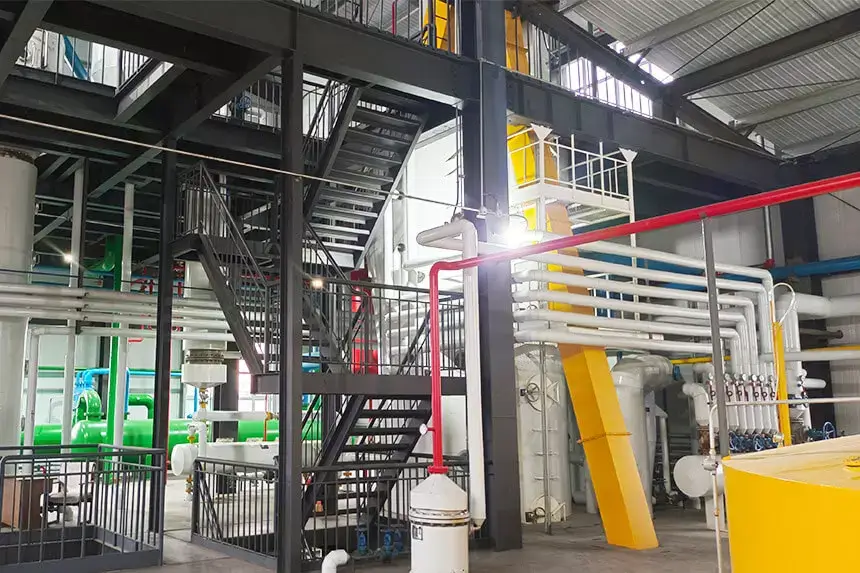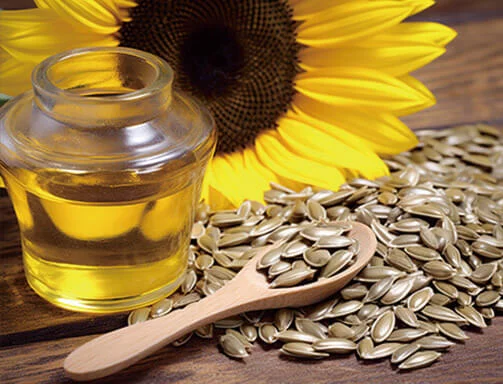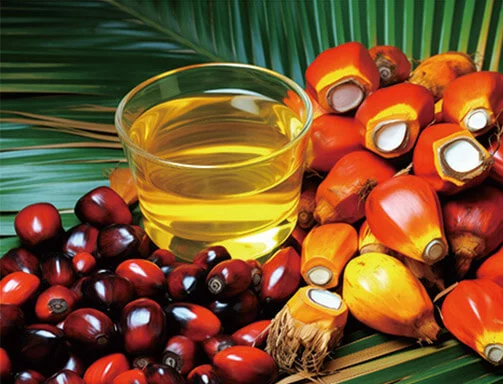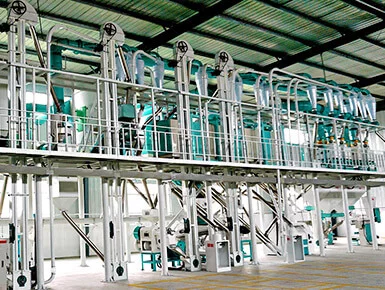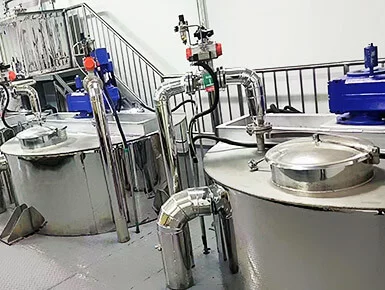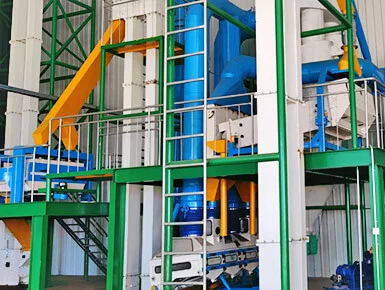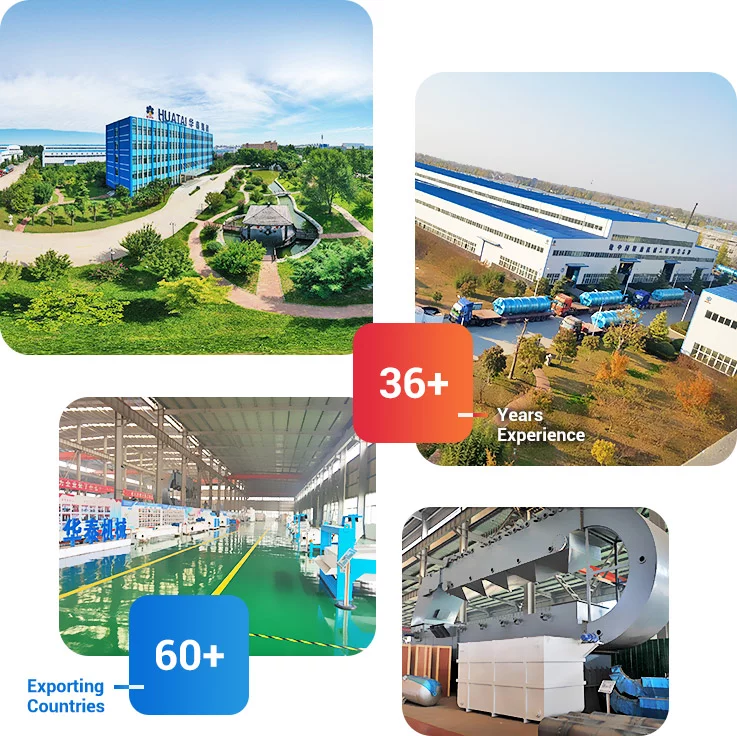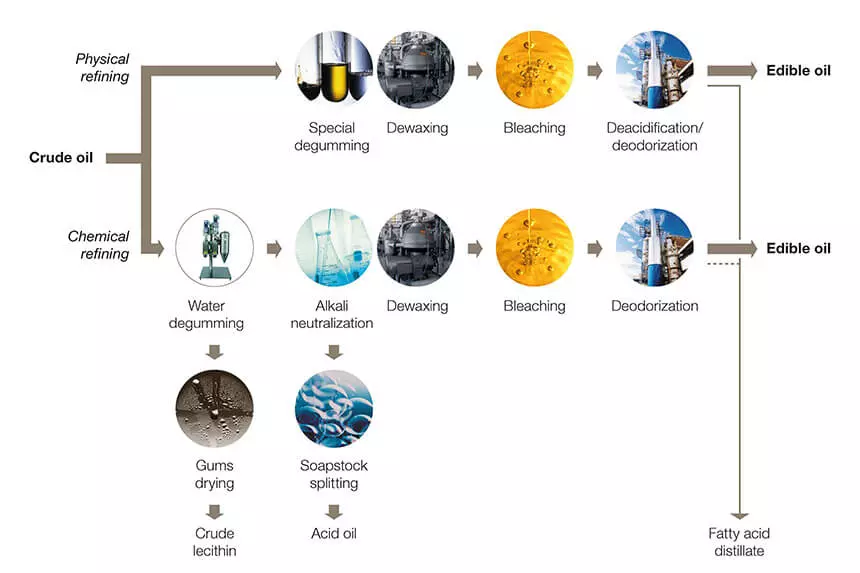
Introduction
The rice bran oil refining process transforms crude oil into a clear, stable, and edible oil by removing impurities such as gums, waxes, free fatty acids (FFA), and odors.
Rice bran oil refining process is divided into chemical refining and physical refining, because physical refining can reduce neutral oil loss, reduce energy consumption, so it is more widely used.
Below, I'll walk you through each step rice bran oil physical refining process, including the required equipment.
Step #1: Degumming - Remove phospholipids and colloids
Degumming is the first step of refining, to separate the colloidal impurities such as phospholipids and proteins in the crude oil.
The traditional hydration degumming process involves heating the crude oil to 65-70°C, adding 5% hot water of the same temperature and stirring, and leaving it to separate. However, this process has limited dephosphorization effect (phosphorus content is about 100-200 mg/kg) and is difficult to meet the requirements of physical refining.
Modern technology uses special wet degumming:
First, add phosphoric acid or citric acid (dosage 0.1%-0.3%) to the crude oil to convert non-hydratable phospholipids into a separable form. Then, with alum solution or flocculant, the colloid is efficiently separated by a centrifuge to reduce the phosphorus content to less than 8 mg/kg.
This step is crucial to the subsequent deacidification and deodorization effects. The equipment needs to be equipped with a high-speed mixer and a centrifugal separator to ensure the degumming efficiency.
![Rice bran oil refining plant]()
Step #2: Dewaxing (optional) - Improve oil transparency
Because the wax content in rice bran oil is as high as 3%-5%, it is easy to crystallize and become turbid at low temperatures. Therefore, dewaxing is required. The dewaxing process includes cooling crystallization and filtration.
- Crystallization: Heat rice bran oil to 55°C to dissolve existing wax crystals, then gradually cool to 10-15°C to promote crystallization.
- Filtration: After standing at a constant temperature, use a plate and frame filter press or a closed filter to separate the wax, and the filtered oil does not contain wax.
This step is indispensable for the production of high-grade edible oil (such as first-grade rice bran oil). The equipment includes a crystallizer, a filter, and a low-temperature control system.
![Refining process of rice bran oil]()
Step #3: Decolorization - Adsorb pigments and residual impurities
Decolorization through the adsorbent to remove chlorophyll, carotenoids and other pigments. First, heat the rice bran oil to 95-100°C, then mix the activated clay or activated carbon with the rice bran oil under vacuum conditions (-0.09 MPa) and stir for 30 minutes. Finally, filter the oil-clay mixture through a plate-and-frame filter to obtain a lighter-colored rice bran oil.
It is recommended to mix activated white clay (2%-4% addition) with activated carbon (0.5%-1%) to improve decolorization efficiency and reduce the cost.
If the rice bran oil is still not up to standard after decolorization, it is necessary to repeat the operation or adjust the white earth activity. The equipment used in decolorization process includes decolorization tower and plate and frame filter. Among them, the decolorizing tower adopts double-layer steam stirring structure to ensure uniform adsorption.
![Rice bran oil refining machine]()
Step #4: Deacidification (Neutralization) - Remove free fatty acids
Deacidification lowers FFA levels, which can cause rancidity.
In physical refining, FFA is removed via steam distillation under high vacuum (755 mmHg) and temperatures above 260°C.
Chemical refining uses alkali (e.g., sodium hydroxide) to neutralize FFA, forming soapstock separated by centrifuges.
Physical refining is preferred for high-FFA crude oil, as it can reduce the loss of neutral oil by 3%-5%, preserve beneficial compounds like oryzanol.
In deacidification process, equipment used includes deodorization towers and centrifugal separators.
![Mini rice bran oil refinery plant]()
Step #5: Deodorization - Remove odors and oxidizing substances
Deodorization is the last key step of refining. It removes odor substances such as aldehydes, ketones, and sulfur compounds by distilling with high-temperature steam (220-230℃) and high vacuum (≤200 Pa) for 4-6 hours.
The process optimization points include:
- Thermal compensation system: shorten the residence time of oil in the high temperature section (15-40 minutes), reduce the decomposition of heat-sensitive components.
- Packing tower design: enhance the vapor-liquid contact efficiency, reduce steam consumption.
After deodorization, the acid value of oil can be reduced to below 0.2 mgKOH/g, and the color reaches the industry's high standard of Y20 R2. The equipment used includes deodorization tower and packing tower.
![Rice bran oil physical refining process]()
Step #6: Winterization (optional) - Improve low temperature stability
Winterization separates high melting point glycerides, avoiding floccules during low temperature storage. By cooling the oil to 3°C, crystals form within 24 hours and then filter.
Winterization is similar to dewaxing, but the winterization treatment targets triglycerides instead of waxes, so it can be selected according to market needs.
The equipment consists of a cooling tank and a filtration system.
Conclusion
The rice bran oil refining process includes degumming, dewaxing, decolorization, deacidification, deodorization, and winterization. By following these steps, you can produce clear, stable, and nutritious rice bran oil.
Henan Huatai Intelligent Equipment Group is a professional rice bran oil refinery plant manufacturer. We have many patented technologies for rice bran oil machines. Our engineers can assist you in designing a rice bran oil refinery and provide a complete rice bran oil production line. If you need more detailed information about rice bran oil extraction process and rice bran oil refining technology, please contact us.
![]() Service Coverage
Service Coverage
![]() FAQ
FAQ


